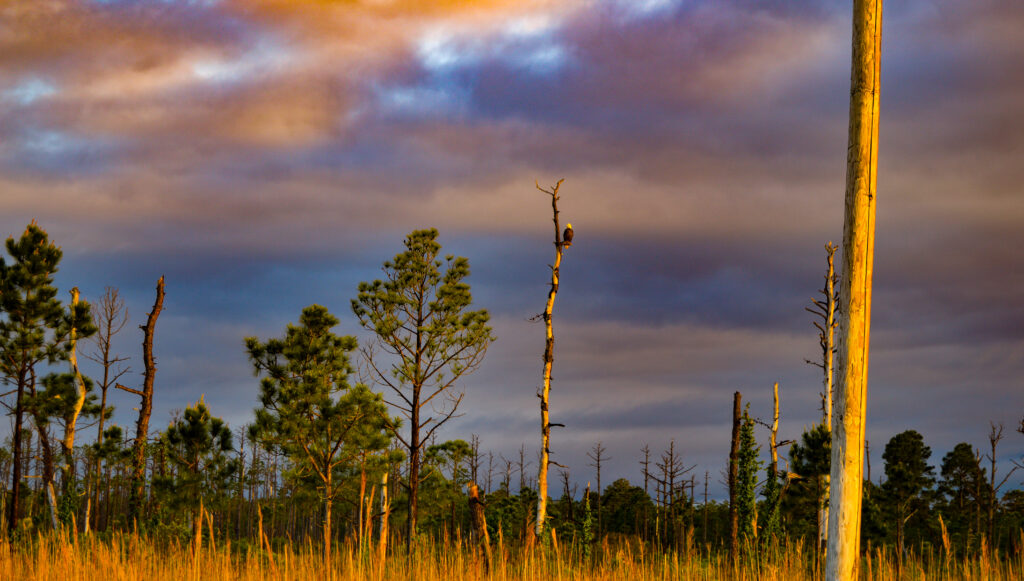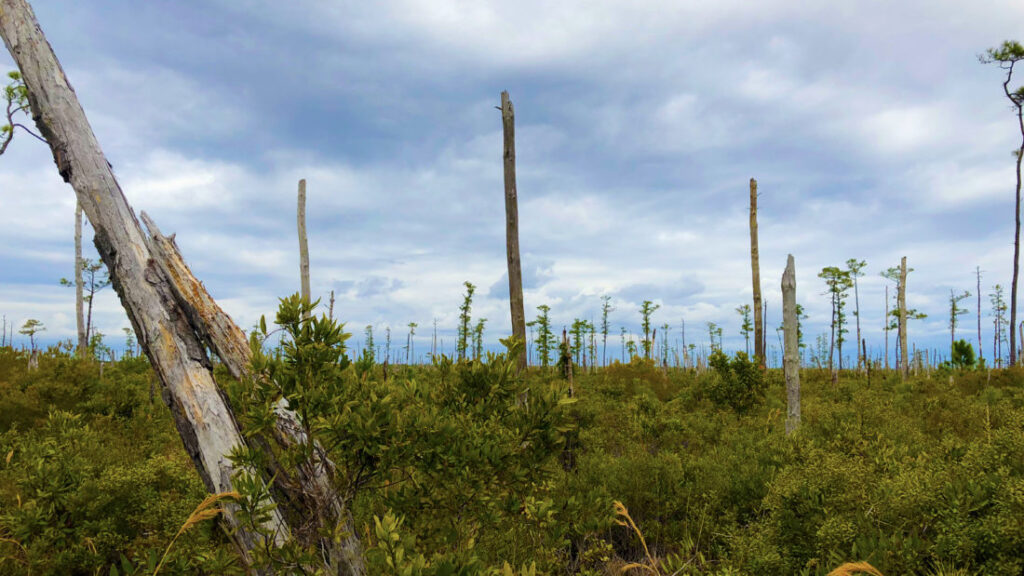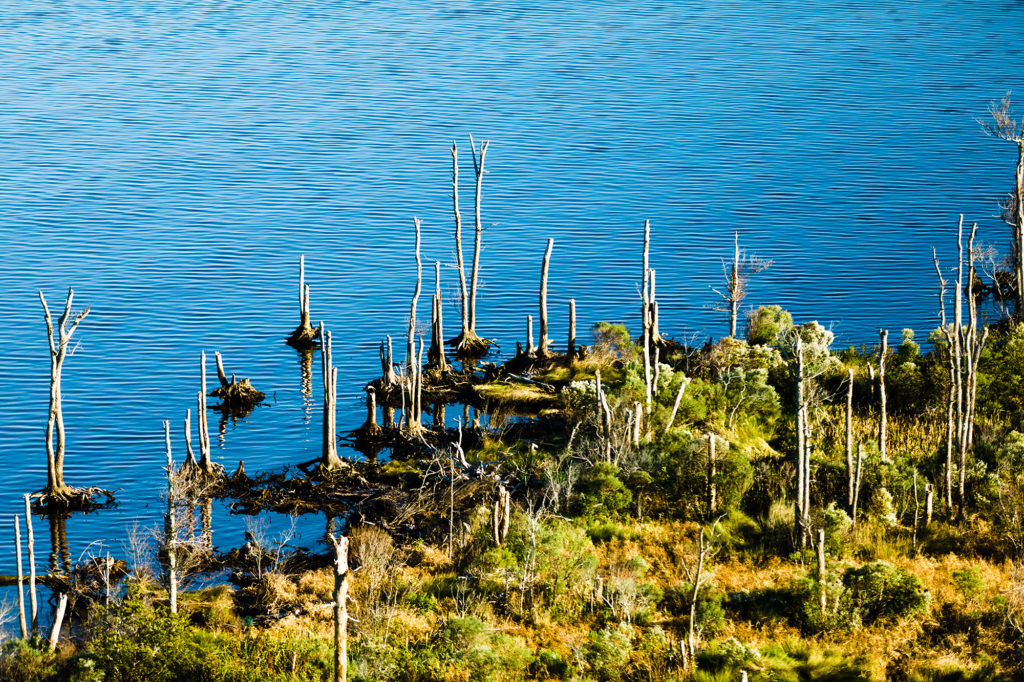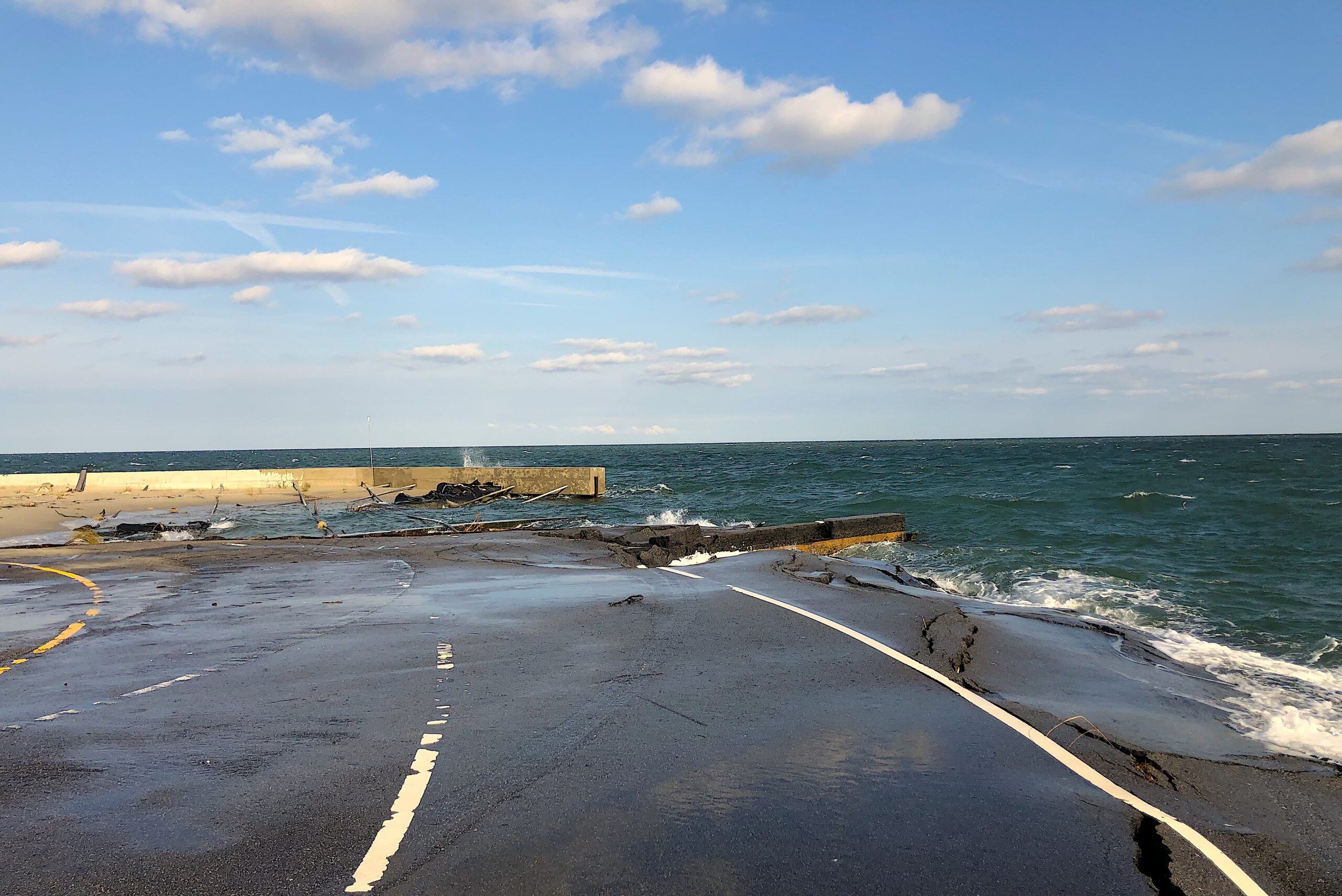
A new study is using satellite imagery to predict the next “ghost forests.”
North Carolina hosts a variety of ghost stories, from Blackbeard’s spirit searching for his severed head along the Outer Banks to UNC-Chapel Hill’s Horace Williams returning to campus from beyond the grave to haunt Caldwell Hall. Although the veracity of these accounts is dubious, there is more than enough evidence to support one particular North Carolina ghost story: the eerie remains of once-flourishing forests along the Atlantic Coast.
These “ghost forests” consist of large areas of dead trees, in varying degrees of decomposition, standing in swampy, brackish environments.
Many climate-induced factors, including natural disasters of increased severity and accelerating sea level rise, have led to saltwater intrusion along the coast. The influx of saltwater is exceeding the threshold of trees’ ability to adapt, and as a result, the frequency of ghost forests has been increasing for the past several decades. Former joint North Carolina Sea Grant and NC Space Grant fellow Emily Ury’s 2021 study showed, for instance, that 10% of living forests have become ghost forests after 1985 in the Alligator River National Wildlife Refuge.

The increase in ghost forests affects the atmosphere. Living plants intake greenhouse gasses, most notably carbon dioxide, from the atmosphere, but ghost forests do not do so to the same degree. Marcelo Ardón, a researcher at North Carolina State University, conducted a project which examined whether ghost forests themselves fueled further climate change.
“We were interested in asking if the dead trees were functioning as straws, facilitating the movement of gasses to the atmosphere, or as corks, keeping the gasses in the soil,” Ardón explains in an interview for NC State University’s initiative on sustainability. “The standing dead trees allowed the movement of some greenhouse gasses, particularly carbon dioxide and nitrous oxide.”
But Ardón says standing dead trees also decreased the emissions of methane, which is a potent greenhouse gas. “These results suggested that the standing dead trees in ghost forests were functioning as filtered straws.”
Ardón believes that while ghost forests are an indication that climate change is affecting coastal ecosystems now, it might be possible to slow their creation or restore wetlands to protect against further degradation.

How and why do ghost forests form?
Duke University’s Spencer Rhea, a joint fellow with North Carolina Sea Grant and NC Space Grant, is using satellite data to map water salinity, which in turn will predict where ghost forests will occur.
“Flooding can kill trees, and salt can kill trees,” Rhea says. “We designed this project to add another piece of data: the salt concentration of water before these trees die.”
Rhea is studying where saltwater is affecting rivers by focusing on specific changes in color on satellite images.
“Many freshwater rivers have high amounts of dissolved organic matter, and they are literally black,” he says. “We see these a lot in North Carolina down on the coast. Oceans are blue and blackwaters are black, and when they mix, it can change the color of the rivers. So, we’re trying to use satellite images to detect saltwater intrusion by looking for this change in color.”
Rhea says that although his project and findings are still in the beginning stages, his background in political science has prompted him to consider how to protect vulnerable forests both locally and nationally.
“One of the issues in coastal Carolina and across the country is drainage canals,” he explains. “People have dug canals on the coast to drain wetlands to allow them to farm, so what this did was create a connection between the wetlands and the ocean.”
This connection worked, he says, when canals only drained water, but with accelerating sea level rise, the canals now allow saltwater to come into the wetlands.
“It’s something that I’ve thought a lot about,” he says. “How can we manage canals, or how can we fill canals in, to protect land and disconnect it more from the ocean and restore it to a more natural state?”
More
Emily Ury on the Alligator River National Wildlife Refuge‘s ghost forests.
Marcelo Ardón on the spread of ghost forests on the Atlantic coast.
Ruthie Froning is a contributing editor to Coastwatch and a science communication intern with North Carolina Sea Grant.
- Categories:


